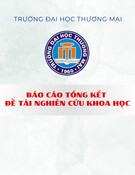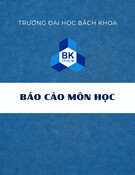
Original
article
The
influences
of
age,
extractive
content
and
soil
water
on
wood
color
in
oak:
the
possible
genetic
determination
of
wood
color
J
Klumpers
G
Janin
M
Becker
G
Lévy
1
Station
de
recherches
sur
la
qualité
des
bois;
2
Laboratoire
de
phytoécologie
forestière;
3
Station
de
recherches
sur
sol,
microbiologie
et
nutrition
des
arbres
forestiers,
INRA
Nancy,
Champenoux,
54280
Seichamps,
France
Summary —
Natural
wood
color
was
investigated
in
approximately
200
French
oaks
(Quercus
pe-
traea
and
Q
robur).
Color
was
measured
with
a
spectrocolorimeter
and
represented
using
the
color
volume
CIELab.
The
most
important
factor
influencing
color
is
age.
Oak
wood
from
younger
trees
has
a
lighter
and
more
yellowish
color
than
that
from
older
trees.
The
amount
of
available
water
is
the
major
soil
factor
influencing
wood
color.
Much
of
the
variation
in
the
color
of
oak
wood
remains
unexplained
and
it
is
possible
that
some
of
this
is
under
genetic
control.
Genetic
studies
on
oak
wood
color
are
difficult,
because
the
colored
heartwood
only
begins
to
develop
between
10
and
20
years
of
age,
and
genetic
trials
for
oak
of
this
age
are
scarce.
Quercus
petraea
/ Quercus
robur
/
CIELab
color
/
age
/
soil
Résumé —
L’influence
de
l’âge,
de
la
teneur
en
extraits
et
du
sol
sur
la
couleur
du
bois
de
chêne:
réflexion
sur
l’influence
de
la
génétique
sur
la
couleur
du
bois
de
chêne.
La
couleur na-
turelle
d’environ
200
chênes
français
(Quercus
petraea
and
Quercus
robur)
a
été
étudiée.
La
cou-
leur
a
été
mesurée
à
l’aide
d’un
spectrocolorimètre
et
représentée
dans
le
volume de
couleur
CIE-
Lab.
L’âge
est
le
facteur
qui
influence
le
plus
la
couleur
du
bois
de
chêne.
Des
jeunes
chênes
ont
une
couleur plus jaune
et plus
claire
que
les
âgés.
La
quantité
en eau
disponible
est
le
paramètre
de
sol
le
plus
important.
Une
partie
non
négligeable
de
la
variabilité
de
la
couleur
du
bois
de
chêne
ne
peut
pas
être
expliquée.
La
connaissance
de
la
détermination
génétique
de
la
couleur
pourrait
four-
nir
les
informations
manquantes.
Des
études
génétiques
sur
la
couleur
du
bois
de
chêne
sont
diffi-
ciles,
sachant
que
le
bois
de
cœur
commence
à
se
développer
à
l’âge
de
10
à
20
ans
seulement.
Quercus
petraea
/
Quercus
robur
/ couleur
CIELab
/ âge /sol

INTRODUCTION
The
color
of
wood
is
an
important
quality
criterion
and
is
often
the
decisive
one
for
consumers.
In
furniture
or
other
interior
equipment,
wood
is
competing
with
other
materials
such
as
steel,
stone,
glass,
sev-
eral
plastics
and
decorative
papers.
Wood
is
often
favored
because
of
its
aesthetic
properties,
particularly
color.
A
survey
of
wood-using
professionals
by
Mazet
and
Janin
(1990)
showed
that
lightness
is
the
most
important
color
criteri-
on,
followed
by
its
hue and
saturation.
Since
1985,
the
wood
color
of
several
species
has
been
systematically
and
ob-
jectively
investigated
by
INRA’s
wood
qual-
ity
laboratory
in
Nancy,
using
a
spectrocol-
orimeter.
Techniques
for
measuring
color
and
some
environmental,
individual
tree
and
chemical
factors
influencing
it
in
oak
(Quercus
petraea
and
Quercus
robur)
are
reported
here.
MATERIALS
AND
METHODS
Wood
In
1987,
INRA’s
forest
phytoecology
laboratory
collected
1600
increment
cores
from
the
Forêt
d’Amance,
near
Nancy.
Three
species
(Q
robur,
Q
petraea
and
Fagus
sylvatica)
from
99
plots
were
sampled
at
2.8
m
above
the
ground.
Work
reported
her
is
based
upon
the
study
of
480
oak
cores
selected
from
the
original
sample
of
1600.
So
far,
3
scientific
investigations
on
these
increment
cores
have
been
reported
by
Flot
(1988),
Nieminen
(1988)
and
Klumpers
(1990).
Janin
and
Mazet
(1987)
clearly
described
the
use
of
increment
cores
for
investigating
wood
color.
Air-dried
increment
cores
were
glued
into
a
wooden
holder
and
then
radially
bisected
to
ex-
pose
a
radial
or
approximately
radial
surface
for
the
measurement
of
color
(fig
1).
For
chemical
investigations,
wood
from
20
oak
trees
(65-150
yr
old)
was
sampled
in
a
sawmill
at
approximately
3
m
height.
Five
radial
sections
per
tree
were
analyzed
for
their
extract
contents.
Colorimetry
Wood
color
was
measured
with
a
ColorQUEST
spectrocolorimeter
from
HUNTERLAB
simulat-
ing
the
CIE
standard
illuminant
A
(correspond-
ing
to
incandescent
light)
and
an
observation
an-
gle
of
10°.
The
color
is
represented
by
the
values
L*;
a*,
b*,
C*
and
h*
(fig
2).
Extractions
Wood
meal
(250
mg)
from
100 oak
wood
sam-
ples
(see
above)
was
extracted
3
times
with
10

ml
of
an
acetone:water
(7:3)
solution;
twice
for
one
hour’s
duration
and
the
last
time
for
15
h.
Total
phenol
content
was
estimated
using
the
Folin-Ciocalteu
method
(Singleton
and
Rossi
1965)
and
expressed
in
mg
of
gallic
acid
equiva-
lents
(GAE)
per
gram
of
dry
wood.
RESULTS
Soil
water
content
and
wood
color
Examination
of
core
samples
revealed
that
the
amount
of
available
soil
water
influ-
enced
the
color
of
Q
robur
but
not
Q
pe-
traea.
In
pedunculate
oaks,
a
darker,
more
reddish
wood
was
produced
in
trees
where
soil
water
was
abundant
in
spring.
The
cor-
relation
coefficients
between
2
soil
param-
eters
and
the
color
parameter
L*
are
pre-
sented
in table
I.
Soil
pH
was
not
significantly
correlated
with
wood
color.
This
was
not
surprising
however,
because
all
sampled
trees
were
located
in
one
forest
where
soils
were
rela-
tively
uniform.
There
was
no
evidence
that
tree
vigor,
as
indicated
by
parameters
such
as
crown
length
and
diameter,
was
related
to
wood
color
in
samples
from
the
Forêt
d’Amance.
Age
and
wood
color
We
should
distinguish
tree
age
(biological
age)
from
wood
age
(as
indicated
by
the

number
of
annual
rings
away
from
the
cambium).
Both
ages
greatly
influence
wood color.
Lightness
L*
and
hue
h*
diminish
with
in-
creasing
wood
age
(see
figs
3
and
4).
This
means
that
the
color
of
the
wood
becomes
darker
and
more
reddish
towards
the
pith.
All
color
parameters
were
significantly
related
to
tree
age
(see
table
II;
figs
3
and
4).
The
relationships
are
particularly
strong
for
hue
h*
and
the
green-red
axis
a*.
It
was
found
that
the
reflection
in
the
red
wavelengths
(600-700
nm)
increased
with
biological
age.
This
indicates
that,
as
trees
get
older,
the
heartwood
color
gradually
changes
from
bright
yellow-brown
to
in-
creasingly
reddish-brown
in
color
(fig
4).
Species
and
wood
color
Table
III
indicates
that,
on
the
average,
very
little
difference
exists
in
wood
color
for

the
2
oak
species.
Differences
between
the
species’
mean
values
of
a*,
b*
and
C*
were
very
small
and
were
not
significant.
On
the
average,
there
was
some
sugges-
tion
that
the
wood
of
sessile
oak
is
slightly
lighter
than
that
of
pedunculate
oak.
This
difference
was
barely
perceptible
to
the hu-
man
eye
and
was
not
significant.
However,
the
differences
in
hue
(h*)
were
significant
with
the
wood
of
sessile
oak
tending
to
be
more
reddish
in
color
than
that
of
peduncu-
late
oak.
Extractive
content
and
wood
color
Figure
5
indicates
that
the
extractive
con-
tent
of
sapwood
is
considerably
lower
than
that
of
heartwood,
a
result
that
numerous
other
authors
reported
before
(eg,
Hillis,
1987;
Weißmann
et
al,
1989;
Peng
et
al,
1991).
This
result
supports
the
hypothesis
that
wood
color
is
related
to
extractives
be-
cause
the
heartwood
is
much
darker
and
redder
than
the
sapwood.
Extractive
content
decreases
from
the
outer
to
the
inner
heartwood
(fig
5),
but
heartwood
becomes
darker
and
more
red-
dish
towards
the
pith
(see
above),
so
that
intra-tree
color
variation
in
the
heartwood
cannot
be
explained
by
extractive
content.
There
is
a
significant
correlation
be-
tween
the
color
of
the
outer
heartwood
and
its
extractive
content,
whereas
the
color
of
the
inner
heartwood
cannot
be
correlated
with
extractive
content
(table
IV).






![Báo cáo seminar chuyên ngành Công nghệ hóa học và thực phẩm [Mới nhất]](https://cdn.tailieu.vn/images/document/thumbnail/2025/20250711/hienkelvinzoi@gmail.com/135x160/47051752458701.jpg)









